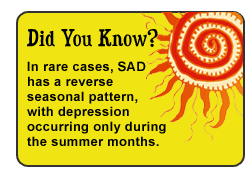The Ninety Percent
October 26, 2015
A New Science
Sports and Exercise Psychology was born in Germany during the 1920’s. It has since developed into a complex interdisciplinary science reaching far beyond just one blog post. One of the most popular applications of this science is at the elite level of sports competition. Athletes looking to gain a competitive edge or take their training to the next level turn to sports psych. methods ranging from quick tricks to mental strength sessions with qualified professionals. Here are some of the mental skills that have emerged from this growing field of study designed to develop the mind of a champion…
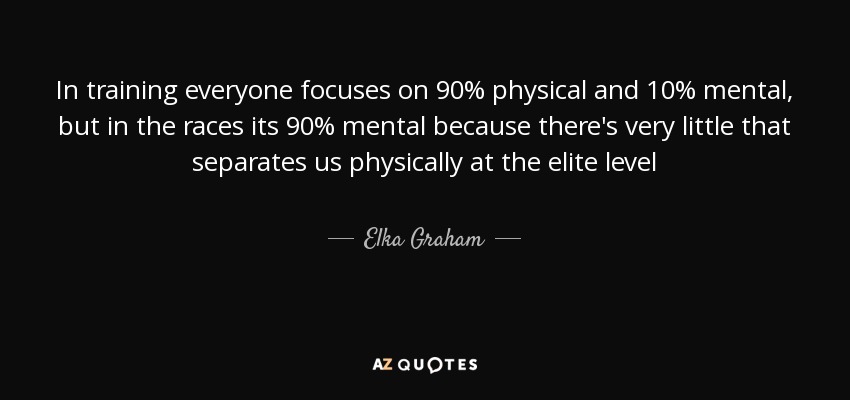
Goal Setting
- Specific
- But within a range:
- Rather than focus on one end-all-be-all goal, have a range within you wish to fall.
- Making successful performance life or death means dying an awful lot.
- But within a range:
- Measurable
- There must be a point where the goal is clearly achieved
- Objectivity means there is a definite point of success
- Positive
- Focus should be on high achievement
- Focus should not be on simply not failing
- Inspiring
- Short term and long term goals keep maintain motivation
- More ambitious goals are easier achieved with many small goals
- Aim High
- Displayed
- Think it, then Ink it
- Your mind should be drawn toward your goal throughout the day
- Placing reminders on the bathroom mirror, setting an alarm at a significant time, pictures and symbols are helpful reminders.
Visualization
Jim Afremow’s book, The Champion’s Mind, cites research that suggests the brain can be tricked into believing both reality and vividly imaged experiences.
Example: A nightmare where an individual is being chased elicits the same response as a real fleeing experience. When the dreamer wakes up he is safely at home, yet frightened, breathing fast, and heart pounding adrenaline throughout his body.
This is why visualization can be used to put an athlete in a competitive situation, prepare him or her for the situation, and yet never leave his or her own home. An athlete who practices visualizing a situation finally reaches that point in competition and can flow rather than strain. The scenario is familiar; along with the stress, anxiety, discomfort, and the solution. A study recently published in the Journal of Sport and Exercise Psychology found biological evidence of some individuals having better visualization abilities than others, but that through practice, an athlete can increase his or her visualization skill. Jim Afremow offers his “three key ingredients for successful imagery rehearsal”:
- Vividly see yourself performing successfully
First-person point of view, as opposed to third-person, allows the situation to become your own. Seeing yourself in a stressful situation is less effective than feeling yourself in a stressful situation.
- Deeply feel yourself performing masterfully
In your visualization, you can only perform as well as you imagine yourself performing. Visualizing that you have mastered the situation will help you to master the real thing.
- Thoroughly enjoy seeing and feeling yourself winning
After addressing that the scenario is stressful, one coping mechanism is to make the stress as enjoyable as possible. The more positive thoughts going through your head, the better you will be able to perform.
+Self-Talk

The “Good Wolf” for our purpose is also the animal of flowing, smooth, effortless performance. Practicing positive self-talk can sound silly at first. In the beginning, you may feel as though you are lying to yourself, that this is another way to “fake it ’til you make it.” However, as with visualization, your body can be tricked into a better state of mind. With practice positive self-talk becomes a positive attitude.
“Do Say Do!”
This was a phrase coined by cross country Coach Kyle Burton. He suggested that athletes should not allow negative thoughts to enter their minds. This does not mean avoiding adversity entirely, but keeping a positive attitude when things do not go your way. Rather than tell yourself, “Don’t fall off this pack.” A runner should tell himself, “Stay in contact with this group.” Practicing telling yourself positive affirmations forces the bad thoughts out and the good thoughts in. The good wolf thrives in competition.
Confidence
“When I race, my mind is full of doubts-whol will finish second, who will finish third?”-Noureddine Morceli
Confidence is mistaken for a multitude of other attitudes: cockiness, no fear of failure, pride, arrogance. A true champion builds genuine confidence. Clarity breeds confidence; not the other way around. This is where we begin to see false senses of confidence. Building clarity means you must be very familiar with your flaws and failures, and you must be self-actualized with your successes. This means you should not fear failure. Failure is a very real measure of where you are at, and what you have to build upon.
Body Language
Below is a TED Talk video blending together many of the mental skills discussed above. This particular talk emphasizes the power of positive body language over mentality. Follow along with some of the tips and tricks in the video.
Related Readings:
- Biological Evidence of Imagery Abilities
- Patterns of Change in Psychological Variables Leading up to Competition
- The Champion’s Mind: How Great Athletes Think, Train, and Thrive -Jim Afremow
- The Energy Bus -Jon Gordon
- Running Within -Jerry Lynch
Helpful Resources:
- Journal of Sports and Exercise Psychology
- http://journals.humankinetics.com.ezproxy.butler.edu/jsep
- Coach Ken Wertz Mental Magic
- Twitter: @MentalMagicII
- St. Vincent’s Sports Psychology
Works Cited
Boat, R., & Taylor, I. M. (2015). Patterns of Change in Psychological Variables Leading up to Competition in Superior Versus Inferior Performers. Journal of Sports & Exercise Psychology, 244-256.
Cuddy, A. (2012, June). Your body language shapes who you are. Retrieved from TED.com: https://www.ted.com/talks/amy_cuddy_your_body_language_shapes_who_you_are
Seiler, B. D., Monsma, E. V., & Newman-Norlund, R. D. (2015). Biological Evidence of Imagery Ablities: Intraindividual Differences. Journal of Sport & Exercise Psycology, 421-435.
The Wolf Within.
Wikipedia. (2015, October 5). Sports Psychology. Retrieved from Wikipedia.com: https://en.wikipedia.org/wiki/Sport_psychology
Which Mood Disorder Is It?
October 20, 2015
What does “Mood” mean?
Everyone faces a period of feeling down, sadness, happiness or sometimes a big all of energy. That is just part of being a human and ordinary life but in this world, a small population of people have these disturbances that are not normal. These disruptions are called mood disorders. When many people think of mood, it is often referred to their feelings. For example, “I am in a happy mood, ” but health professionals look review mood differently. In a clinical setting, it is used as a persistent emotional state that affects how a person sees the world.
College students face many mental health issues that are left untreated and can often drain students and is important for students to take action now. Research by the National Alliance on Mental Illness on college campuses show:
1 in 4 students have a diagnosable illness
40% do not seek help
80% feel overwhelmed by their responsibilities
50% have been so anxious they struggled in school
Depression
Depression is the number one reason why students drop out of college. It is an easy getaway and if it is left untreated, it could lead to other symptoms and suicide. It is said that 36.4% of college students have experienced some level of depression in 2013. Depression is a common illness that interferes with life making it hard to eat, sleep, work and makes you feel helpless. Depressive illnesses are disorders of the brain and are likely caused by a combination of genetics, biological, psychological and environmental factors. Knowing how you handle feelings, stress, heartbreak, an isolation may help you realize when you are depressed.
Symptoms:
-Feelings of sadness or unhappiness
-Change in appetite or weight
-Slowed thinking or speech
-Loss in energy and sleeplessness
-Trouble concentrating
-Thoughts of suicide
Though you may see signs in yourself, you may have a friend whose behavior has been changing recently. Here are recognizable signs of depression of a friend:
-They are no longer engaged in activities they once loved
-They are experiencing extreme anger or sadness over a relationship in their life
-They are talking about death or suicide
-They no longer attend classes or social outings
Treatment:
-Psychotherapy (talking therapy) used to treat mild and moderate forms of depression
-Antidepressants prescribed by family doctor
-Electroconvulsive therapy: release of chemicals in the brain that aid communication between nerves
S.A.D. Syndrome (Seasonal Affective Disorder)

SAD syndrome is a mood disorder that is associated with depression and seasonal variances of light. It affects half a million of people in the winter season between the months of September to April. The symptoms soon calm down during the spring and summer months but still have different affects. Majority of in people deal with SAD syndrome from age 18 to 30. It is more typical for women to suffer from it; 3 out of 4 SAD sufferers are women. It also affects more or less to people depending on their geographical location.
Symptoms in winter months:
-Tiredness
-Low energy
-Weight gain, cravings for foods high in carbohydrates
-Oversleeping
Symptoms in summer months:
-Depression
-Trouble sleeping
-Weight loss
-Poor Appetite
-Anxiety
What causes SAD Syndrome?
As seasons change, different sunlight patterns cause a shift in the circadian rhythm and causes these biological clocks to become irregular with daily schedules. The hormone melatonin, a sleep-related hormone secreted in the brain, has been linked to depression because the mormons has increased levels in the dark. So when there is shorter days and longer nights, the secretion of melatonin increases.
Treatment:
For mild symptoms, spending time outdoors in the sunlight relaxing or doing work is helpful. For severe symptoms, bright light therapy or phototherapy decreases the secretion of melatonin in the brain. If light therapy does not work, it is possible to be prescribed to an antidepressant drug to reduce the symptoms.
Postpartum Depression
Often people may think having a baby is beautiful and brings joys to life. Though that is true for some, other women may face postpartum depression.. Postpartum Depression is a depression after a woman gives birth to her child. It can occur immediately after delivery or up to a year later but most of the time, it occurs within the first three months after delivery. This depression can look like the normal “baby blues” except that postpartum depression symptoms last longer and more severe.
Symptoms:
-Lack of interest in your baby
-Negative feelings towards your baby
-Worrying about hurting your baby
-Lack of concern for yourself
-Feelings of worthlessness and guilt
-Changes in appetite or weight
-Recurrent thoughts of death or suicide
Causes:
The three most common causes are hormonal changes, physical changes, and stress.
Hormonal changes: Women experience a huge drop in estrogen and progesterone hormone levels and huge drop in thyroid levels. These hormonal changes may trigger postpartum depression.
Physical Changes: Women could be dealing with pain form difficulty or struggle with the weight gain and trying lose it leaving women insecure about themselves.
Stress: Women are often overwhelmed and anxious about the ability of taking care of their baby. This can be difficult to adjust to and cause stress.
Coping and Treatment:
The best way to cope with the depression is to take care of yourself for physical and mental well being. Here are some tips and lifestyle changes:
-Don’t skip on sleep
-Set aside quality time for yourself
-Make meals a priority
-Get out in the sunshine
-Ease back into exercise
If self-help did not work, there is always professional treatment
-Antidepressants
-Hormone Therapy
-Individual Therapy
Resources:
Counseling and Consultation Services (HRC, 120)
Anxiety and Depression Association of America
Society for Light Treatment and Biological Rhythm
http://www.websciences.org/sltbr
References
“Mood Disorders.” Mood Disorders. N.p., n.d. Web. 20 Oct. 2015.
“Top 5 Mental Health Challenges Facing College Students.” Best Colleges. N.p., n.d. Web. 20 Oct. 2015.
“Seasonal Affective Disorder (SAD).” Mental Health America. N.p., n.d. Web. 20 Oct. 2015.
“Postpartum Depression and the Baby Blues.” : Symptoms, Treatment, and Support for New Mothers. N.p., n.d. Web. 20 Oct. 2015.
Media Sources:
https://www.etsy.com/market/think_happy_thoughts
http://www.babycenter.com/0_postpartum-depression-and-anxiety_227.bc
http://kidshealth.org/teen/your_mind/mental_health/sad.html
Crash Course to Anxiety Disorders
October 19, 2015
What is anxiety?
Anxiety is a mental state that is characterized by persistent and chronic feelings of threat or worry. It usually occurs when some aspect of your life feels uncontrollable or temporary feelings of stress are not relieved. Anxiety symptoms can be alleviated quickly if taken care of, or they can manifest into an anxiety disorder. An anxiety disorder occurs when symptoms of anxiety affect a person’s ability to function in daily life. You can determine if you have an anxiety disorder by visiting your doctor and having them evaluate your medical and mental health history, performing a physical exam, and usually a drug test because some medications and drugs can have side effects that are similar to anxiety symptoms.
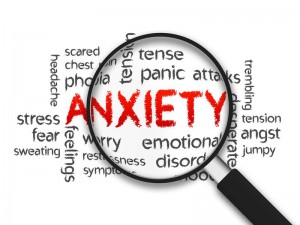
Being aware of anxiety disorders is important because, as college students, we are in a time of our lives that is high-risk for developing an anxiety disorder. According to our textbook, Access to Health, 40 million Americans over the age of 18 suffer from some type of anxiety disorder. This is shown even more by the statistic that 9.4% of undergraduates deal with anxiety. That may not seem like much, but anxiety is something that no one should have to deal with, especially college students with so much on our plates. The presence of an anxiety disorder is more often than not accompanied by depression as well. Depression can lead to a whole other set of problems outside those associated with anxiety disorders. Both anxiety and depression lead to self-harm behaviors, which 17-38% of college students with anxiety disorders do.
Types of Anxiety Disorders
Generalized Anxiety Disorder
This disorder is characterized by chronic symptoms of anxiety with no particular trigger that the person can pinpoint. To be diagnosed with GAD, you must have at least three symptoms for more days than not over the period of six months. Symptoms of anxiety include irritability, inability to concentrate, muscle tension, restlessness, being easily fatigued, and unrealistic and exaggerated worry about every day events. There are no concrete causes of any anxiety disorder, but GAD seems to run in families.
Panic disorders are characterized by the occurrence of panic attacks. Panic attacks are short-lived, intense physical reactions to anxiety. They can last up to a half hour, depending on the severity. These attacks involve physical symptom such as an increased rate of breathing, hot flashes, stomach cramps, chest pain, chills, having trouble swallowing, and a feeling of being doomed or sense of death. Some professionals think this could be an over reactive fight or flight response. They leave the person feeling drained and very tired. Panic disorders can make people very anxious about going out in public places because of the occurrence of panic attacks, which becomes destructive to their life. Panic disorders increase the likelihood of developing agoraphobia, which is the fear of being in any place or situation that is hard to escape from in the event of a panic attack. Panic attacks can be triggered by a source of anxiety that the person deals with, or could happen for no reason. According to Access to Health, 6 million Americans over the age of 18 suffer from panic disorders. They usually show up in early adulthood and are more common in women than in men.

Phobic Disorders
Having a phobia means that you have an irrational and persistent fear of something specific, like an object, activity, or situation. With this irrational fear comes the intense need to avoid that particular trigger of fear/anxiety. Common phobias include arachnophobia, fear of spiders, and social phobia, fear of being humiliated or embarrassed in social situations. Social phobia tends to lead to people avoiding social situations altogether.
Obsessive Compulsive Disorder
Obsessive Compulsive Disorder is characterized by repetitive behaviors such as rituals, and recurrent, unwelcome thoughts. A lot of times people with this disorder have an intense fear of germs or of dirtiness, and want things to be exactly symmetrical and in order. The difference between OCD and other anxiety disorders is that the people who have it know that their fear and behaviors are irrational but do not have the power to stop it. All of us have a little bit of OCD about certain things, but to be diagnosed with the actual disorder it has to interfere with your daily life and OCD behaviors take an hour or more of your time per day. OCD usually starts to show up in adolescence or early adulthood, around the age of 19.
Post-Traumatic Stress Disorder
People develop PTSD after witness or experiencing a traumatic event, such as terrorism, an accident, assault, a natural disaster, or war. Access to Health again provides a statistic: 1 in 8 cases of PTSD are soldiers. Of the people who have PTSD, less than half of them receive professional help for it. Symptoms of PTSD include insomnia, flashbacks, nightmares, acute anxiety, dissociation, and possibly nausea when they recollect the event.
Possible Causes of Anxiety Disorders
No one really knows what exactly causes someone to develop an anxiety disorder, but there are some factors that tend to contribute to them. The biology of someone’s brain and the way it functions may make them more susceptible to developing an anxiety disorder. Doctors and psychologists have used PET scans to analyze how the brain reacts to certain events in people with an anxiety disorder. Going along with brain biology, heredity seems to play a role in anxiety disorders as well.
Other factors that may contribute to anxiety disorders are environment and social/cultural roles. Your environment and the way you respond to it could program your brain to respond in a certain way every time that particular thing happens in your environment. The way your parents respond to things can also make an impression on the way you respond to the same thing. Social and cultural roles differ between men and women. It may seem like more women deal with anxiety disorders but it could be that men repress their anxiety because of the way it would look to the rest of society. In society it is more acceptable for women to express their anxiety because people may almost expect it from women.
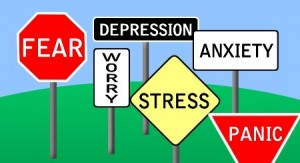
Treatment
There are multiple ways to go about getting help for an anxiety disorder, but not every method is right for every person or disorder. It is important to seek professional help if you feel that anxiety is interfering with your daily life and ability to function. The professional can help you from there and give recommendations for what may work for you. Treatment for anxiety disorders include therapy sessions, certain medications, and coping strategies.
You might say…so is there a difference between anxiety and stress? Watch the video for more info: 
If you feel like you may have an anxiety disorder or know someone who might, don’t hesitate to take care of it! You can seek help at a resource right on campus:
Butler University Counseling Services
530 W. 49th Street (HRC, Room 120)
Indianapolis, IN 46208
Phone: (317) 940-9385
References
Donatelle, R. J. (2012). Access to Health (12th ed.). San Francisco, CA: Pearson Benjamin Cummings.
Chen, J.-P., Reich, L., & Chung, H. (2002). Anxiety disorders. Western Journal of Medicine, 176(4). Retrieved from http://www.ncbi.nlm.nih.gov/pmc/articles/PMC1071743/.
Media Sources:
http://yourliferecoverycenter.com/panic-anxiety-disorder/
http://brainprick.com/how-to-deal-with-anxiety-disorders-and-gain-peace/
http://anxiety-treatments.com/
http://youtube.com/ watch?v=1g_AxF9nLzQ
Type 1 Diabetes: Don’t Sugar Coat It
October 12, 2015
Diabetes affects more than 29 million people in the United States. Depending on the type of diabetes, factors contributing to this disease are related to obesity, a sedentary lifestyle, and genetics. Insulin, a hormone, is used to transport glucose from the bloodstream into the cells of the body and therefore plays a large role in regulating blood glucose levels. Type 1 diabetes is usually diagnosed in younger patients and is when the body cannot produce enough insulin. In type 2 diabetes, the patient’s body cannot use the insulin it produces. Type 2 diabetes is more often diagnosed in adults, more specifically African American, Latino, Native American, and Pacific Islander individuals.
What factors can lead to T1D?
Diagnosis of type 1 diabetes can often result from a genetic predisposition and environmental factors. Often those with type 1 diabetes inherent risk factors from both parents, not just one. Type 1 diabetes develops more commonly in winter and is more prevalent in areas with colder temperature. Viruses also affect the onset of type 1 diabetes. A virus that may have a mild effect on one individual, may onset type 1 diabetes in another individual who is predisposed to the disease. Additionally early diets play a role in developing diabetes as T1D is less common in those who were breast fed than those who were not.
Blood Glucose Testing
How and when to test:
- Insert a test strip into the meter.
- Use the lancing device to get a drop of blood from the fingertip.
- Touch the test strip to the drop of blood and wait for the result.
- Your blood glucose level will appear on the meter.
Living with Type 1 Diabetes
Medication: Those with type 1 diabetes are unable to produce sufficient insulin from their pancreas. Therefore blood glucose levels must be monitored and controlled through daily injections of insulin through an insulin pen, syringe, or pump.
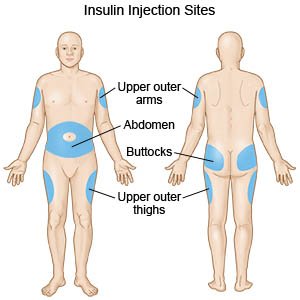
Exercise:
Exercise is a powerful tool to balance insulin doses. Responses to exercise on blood glucose levels before starting activity, intensity and duration of the activity, and recent changes in insulin doses. Often individuals with T1D experience a drop in blood glucose levels. If blood glucose levels drop to a certain level, hypoglycemia will occur. In this situation it is important to carry a carbohydrate food or drink that will quickly raise levels.
Blood glucose can also run high during or after high intensity exercises that increase stress hormones. If blood glucose levels are high before exercise, it is important to check for ketones in the blood or urine. If ketones are present, exercise should not occur.
Technological Advances
Insulin Pumps
Insulin pumps are small computerized devices that deliver insulin in steady measured and continuous doses, known as basal insulin, and as a surge dose around meal times. The pump injects insulin through a catheter, a small flexible plastic tube. The catheter is inserted through the skin into fatty tissue. While monitoring of blood glucose levels is still needed, insulin pumps allow those with T1D to better control their glucose levels. The delivery system mimics the pancreas’s normal insulin release responses.
Advantages:
- Replaces individual insulin injections.
- More accurate delivery of insulin.
- Results in fewer swings in blood glucose levels
Disadvantages:
- Can cause weight gain.
- Can cause diabetic ketoacidosis if catheter comes out on accident.
- Can be expensive.
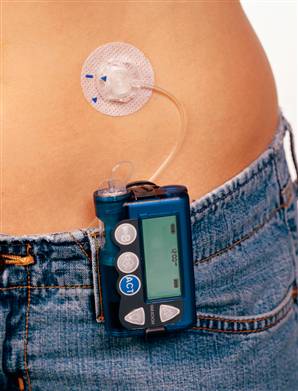
Dexcom Continuous Glucose Monitoring
Dexcom offers a variety of blood glucose monitoring products such as the Dexcom G5, which allows dynamic glucose pattern monitoring. Dexcom created an implantable sensor that the body would not reject and that would perform for an extended period of time. The Dexcom reveals if glucose levels are trending up, down, or if it is at the appropriate level. The Dexcom CGM also has Bluetooth settings that allows the readings to be shared with loved ones across the country.
My Amazing Grace
On December 26, 2015 my little cousin Grace went into Ketoacidosis- her blood glucose levels were over 400 mg/dl. After being rushed to the hospital Grace was diagnosed with type 1 diabetes at age 8. Since her diagnosis, Grace has proved to be the strongest, most courageous little girl. She currently uses a Dexcom G4 to help monitor her blood glucose levels. She will be able to explore the insulin pump as an option this upcoming December. She looks at her diagnosis as just part of everyday life and does not let it slow her down. She has a passion to spread awareness about T1D.

Resources:
http://www.diabetes.org/
http://www.telegraph.co.uk/news/science/science-news/11151909/Cure-for-Type-1-diabetes-imminent-after-Harvard-stem-cell-breakthrough.html
References:
http://www.diffen.com/difference/Type_1_Diabetes_vs_Type_2_Diabetes
http://www.mayoclinic.org/diseases-conditions/diabetes/in-depth/blood-sugar/ART-20046628?
http://www.betterhealth.vic.gov.au/bhcv2/bhcarticles.nsf/pages/Diabetes_-_long-term_effects
Food Deserts: How Far Are You From A Fresh Apple?
October 5, 2015
A Looks at the Realities of the Underprivileged
In every corner of the country a frightening trend has been happening in our poor rural and urban areas, food deserts leave families without access to nutritional foods and every day necessities, and the results are already affecting every one of us. Food deserts are defined by the USDA ‘urban neighborhoods and rural towns without ready access to fresh, healthy, and affordable food.’ More specifically the residents have to live anywhere from 2-6 miles from a true grocer in urban areas, and the majority of people living in the area must live below the federal poverty level and have limited means of transportation, private or public, in order for it to be classified a food desert. Today there are over 23.5 million people in America that are currently living in a food desert, a large amount of them families, and that number is growing rapidly.

While this tragedy effects quite literally millions of families, it is seldom talked about, and the majority of America has no idea what in the world a food desert even is. In this blog post we will discuss some reasons for food deserts, results of food deserts, who food deserts affect, and new and innovative ways communities are rising up to help one another and end this crisis.
Indianapolis is the Worst City in the Country for Food Deserts
A not so fun fact for residents of the largest city in the state of Indiana, Indianapolis ranks dead last in the country for the amount and severity of food deserts found within its’ city proper. As a matter of fact nearly 50% of the east side of Indianapolis is classified by the USDA as a food desert, as shown in the graphic below. To add on the that are some disturbing statistics unique to the food deserts of Indianapolis, 40% or more of the residents make 200% or less of the federal poverty minimum, meaning they make less than half of the federal poverty level. As is expected at that income level, those families typically do not own vehicles, leaving them to either walk, bike, or rely on Indy’s notoriously spotty public transportation to get to and from the nearest full grocery store, making an hour long chore for most people a multiple hour long endeavor for people who are just trying to supply their family with fresh foods and vegetables. With the closing in 2014 of the four Double 8 Food locations around the poorest areas of Indy, residents found it almost impossible to find an affordable source of nutritional foods within multiple miles, and many of these residents, including a significant amount of senior citizens, are feeling hopeless and without option as their only source for food becomes fast food franchises and the junk food that is available at the gas station.

So What?
The simple reality is that if you live in a suburb, or even in a typical urban neighborhood, you don’t live in a food desert, or maybe not even close to one, and that may make it hard for you to connect to this sad truth. It is hard to understand the severity of this when you are not living it, and that is perfectly fair of someone. Most of us spend our lives with the assumption that when you want to get quality meat, vegetables, whole grains, or fruits you (or your parents) drive to the grocery store and stock up for the week, that’s that, the fridge is stocked for some time to come. Fair enough, but what happens when you don’t have a car, and that grocery store that’s ‘just around the corner’ is in reality a mile and a half away, and there isn’t a bus route by you so you’re only choice is to walk to the store, get a weeks worth of food for you and your family, then walk a mile and a half back with 30 pounds of groceries? You might think it is definitely a burden, but it’s a mile and a half, you walk further than that with a backpack every day! Right, now imagine doing that once or twice a week, after working a full time job, for years on end, through the 100 degree weather in Summer, and even worse the 0 degree weather in Winter. The thing is, you’re lucky in these neighborhoods if your family can even do that, most families don’t have the time to do that, so the only option now is fast food or whatever you can find at the gas station or corner store. Well when that is the majority of your diet you will obviously have an increased rate of obesity and all of the health problems that come with it, diabetes, heart attacks, higher rates of cancer, and so on. When a significant portion of the population has higher rates of health problems, we as a society all pay for it when they make their trips to healthcare facilities, add on to the matter that if the are below the poverty level the chances of them having insurance are near 0, so their healthcare costs largely get passed on to the tax payer. So I can assure you, even if this is a problem you have never heard of or don’t even really care about, it is certainly affecting you and will continue to do so for decades to come.
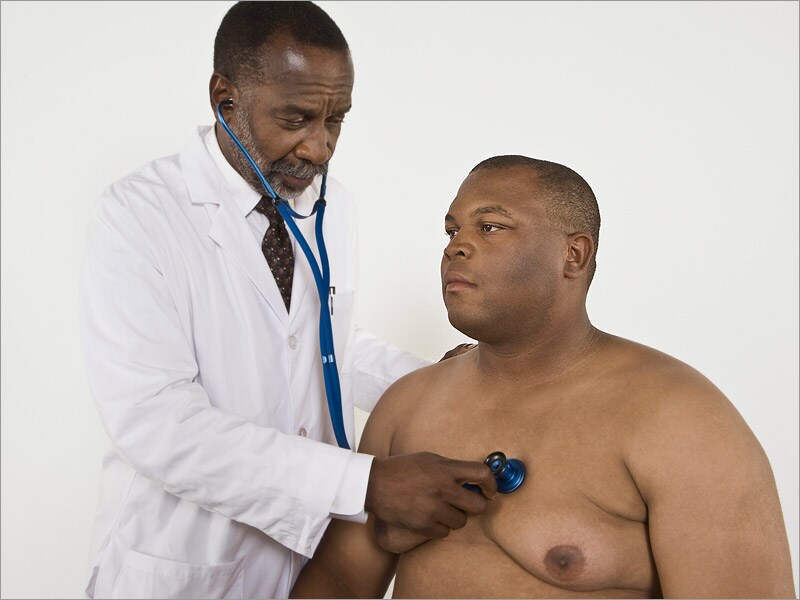
Well, What Can I Do?
The natural question following all of this information is ‘okay, well now what?’ How can you as an individual create any meaningful change to combat this problem? It’s a tough question to answer, as there is no one way, each community is different and requires a different solution, some more severe than others. The very first thing you can do is educate yourself further on the matter, at the bottom of this post I have multiple resources you can access to gain a better picture of the food desert crisis in America that are all free to access and go further in the issue. After that I suggest learning of the food deserts specific to your area, be that urban or rural, and learn about their specific causes and problems; the solution for a food desert on the east side of Indy will likely not be the same as that of a small town in rural Indiana 100 miles north. From there, it is totally your decision, write to your local politician or congressmen to try and call attention to the issue, get it known on social media, recruit others in the community to call awareness to it, these are all things you can do from the comfort of your own house. If you are more of a hands on individual I would recommend this video:
The single biggest thing communities are getting together and doing to fight food deserts is urban gardening, as it is cheap, practical, economic, and green. Getting a small group of people together, and taking a small plot of land in a public area or a private/abandoned lot (with permission) and planting rows of edible vegetables and fruits has become a trend that’s sweeping the nation. You do not need much space to build raised beds to grow tomatoes, cucumbers, squash, lettuce, etc. in, you can do it in a park, an alley, on a rooftop, on the side of a building even. Urban gardening is the single most prevalent solution to dealing with food deserts, and it makes sense why. The costs are negligible, and you are allowing fresh and nutritious foods directly into the hands of community members at low or no cost, the only serious investment from you is time.
With all that said, how you choose to end your local food desert is 100% up to you and the people you organize with, there is no one size fits all solution, but getting out there and making attempts to better the community will always be more beneficial than letting it sit there and sink further.
For More Information:
- http://indyfoodcouncil.org/wp-content/uploads/2013/07/Indianapolis-Food-Related-Initiatives-Assessment-A-SPEA-Capstone-Project.pdf
- http://indianapublicmedia.org/news/indianapolis-ranks-worst-nation-food-deserts-67800/
- www.youtube.com/watch?v=jicYbi-8ZNU

